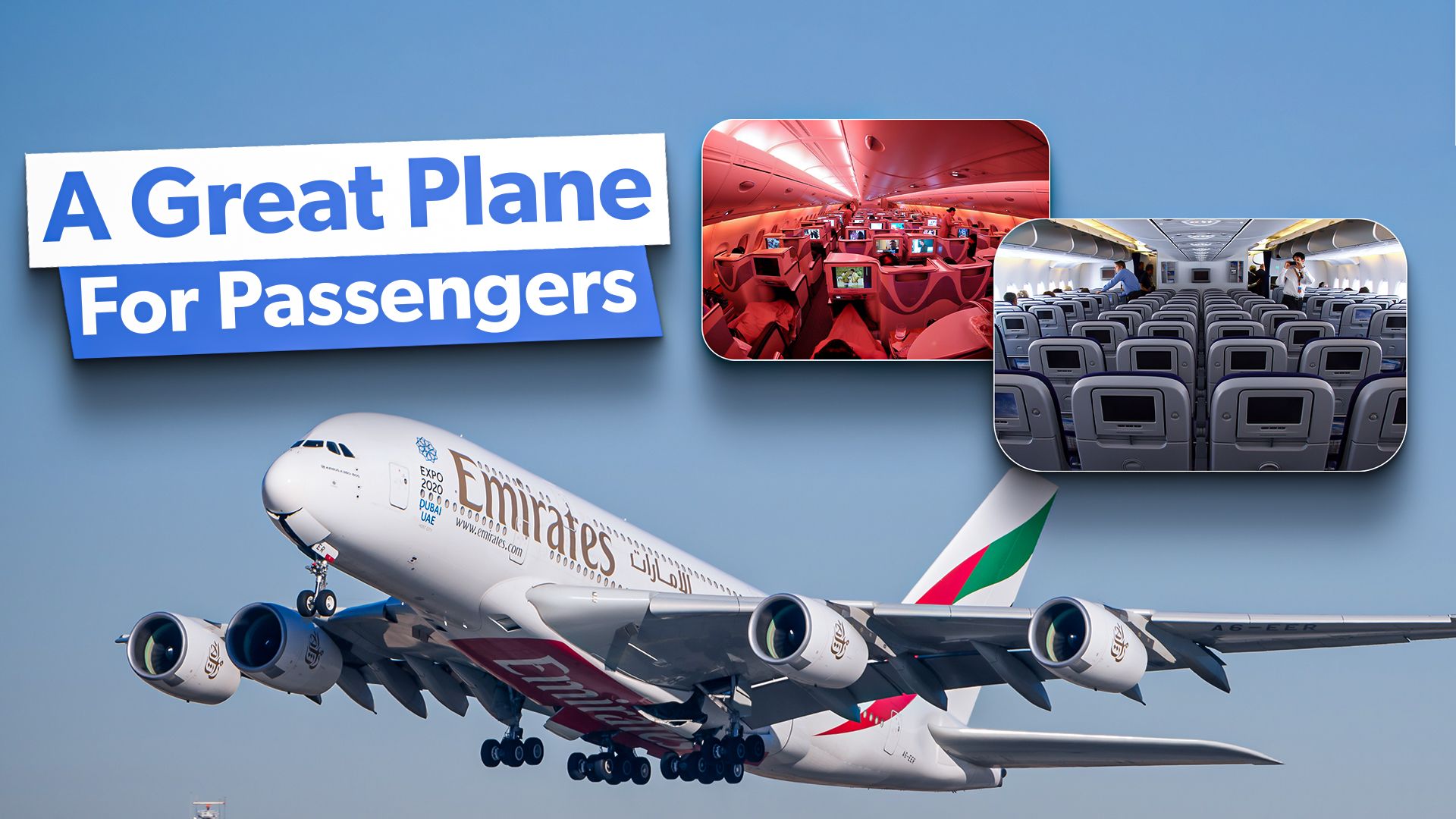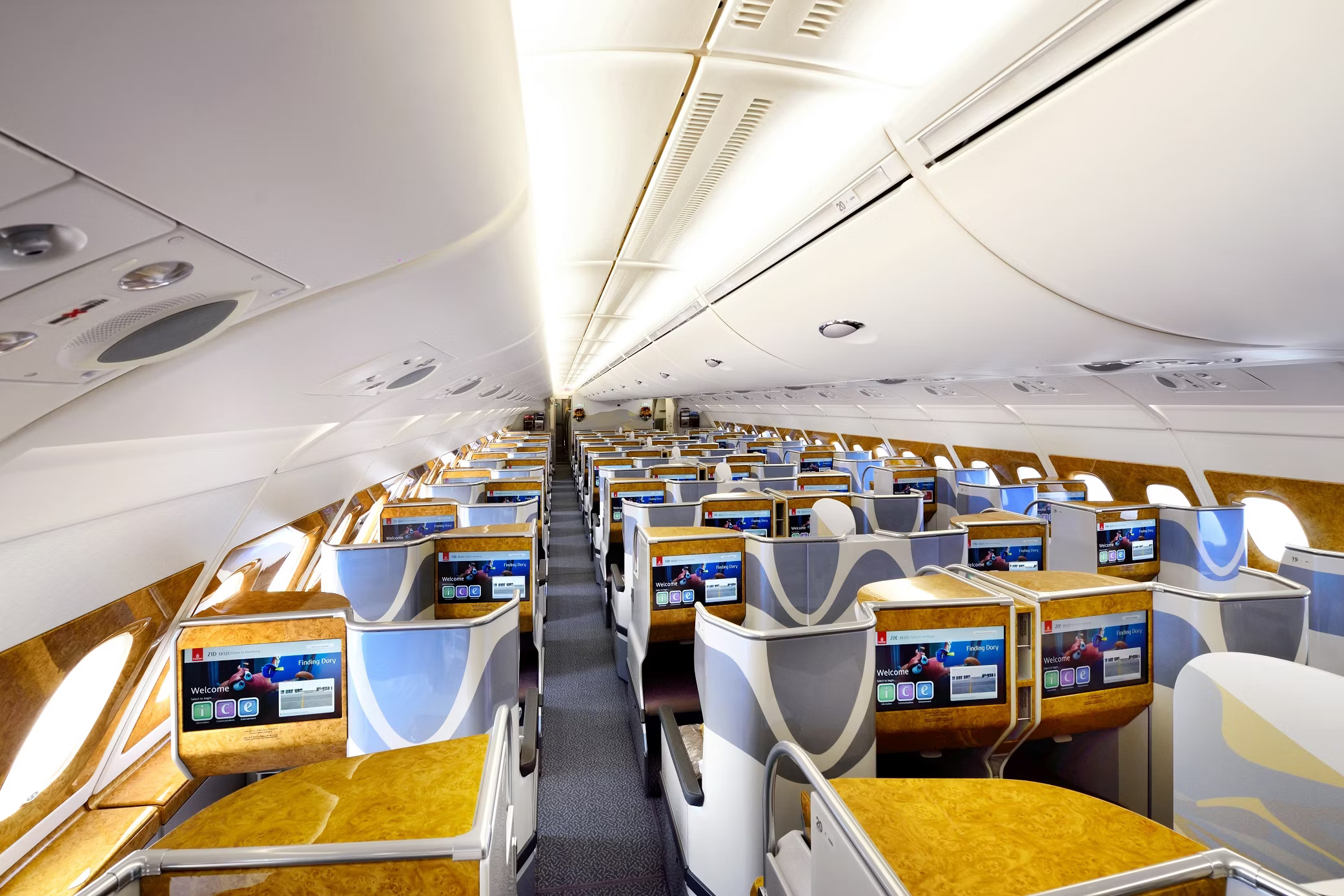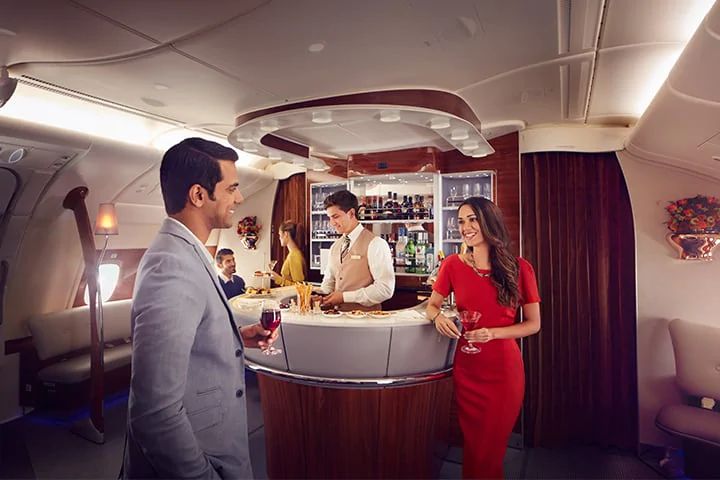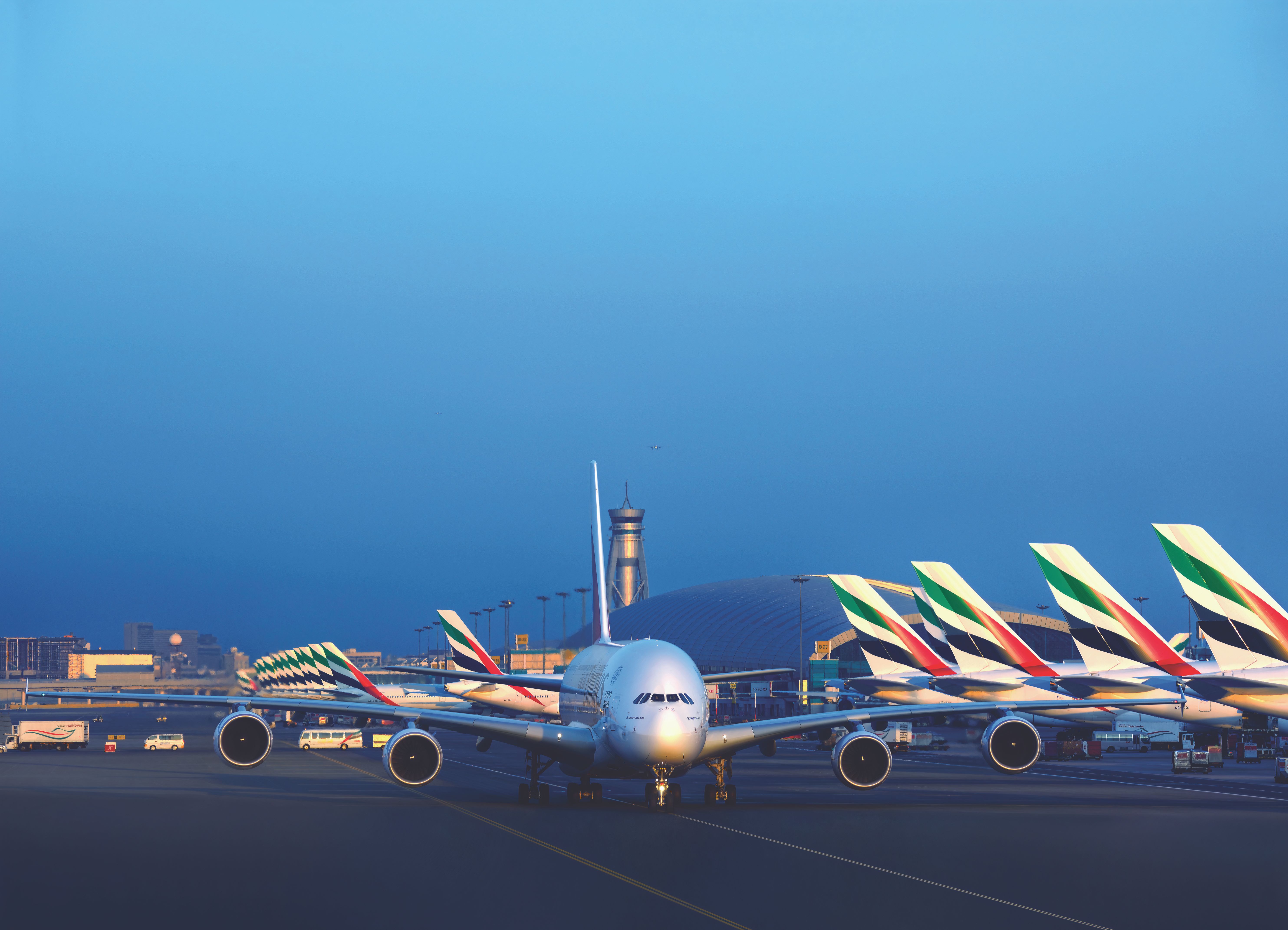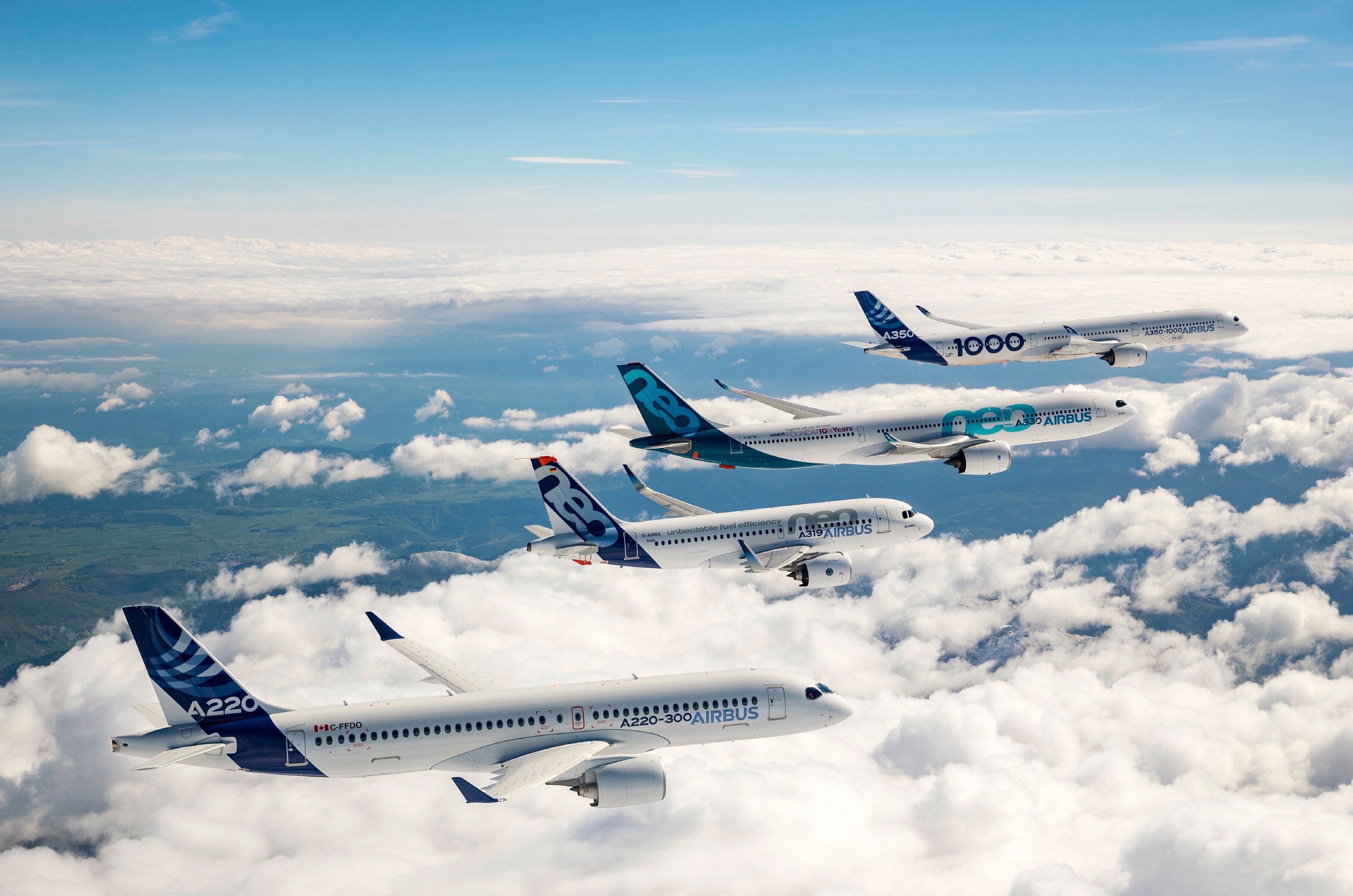Summary
- The Airbus A380 offers large cabin space & seating, enhancing passenger comfort.
- A bar area is available for premium passengers, providing a unique in-flight experience.
- The A380 is environmentally friendly, efficient, and reliable, setting high standards in aviation safety.
The largest commercial aircraft ever built – the Airbus A380 – has a lot of advantages for the operator. Its capacity to accommodate more than 850 passengers on a single flight decreases operating costs. Further, an aircraft as large as the A380 will also result in reduced congestion in airports and improve operational efficiency. The A380 is an excellent bird even for pilots as it has some of the most sophisticated avionics suites, allowing pilots to have better control of their flight.

Related
Unlikely Visitor: 5 Fascinating Facts About The Time An Airbus A380 Diverted To New York Stewart Airport
The double-decker aircraft was a surprising guest at the largely domestic airport.
Despite all these wonderful qualities, the aircraft was not as popular as it could have been. Its production came to an end a few years ago, and no carrier in the US ever used the Airbus A380. Despite it all, there are a lot of benefits for passengers who board the A380. But what exactly are these advantages? Let’s find out.
Large cabin and seating space for passengers
| Passenger capacity | 575 typical, 853 max |
| Maximum cabin width | Main deck: 6.5 m Upper deck: 5.8 m |
| Cabin length | 49.9m |
The A380 has the largest passenger cabin in the aviation industry. This gives passengers a greater space for relaxation and stretching out. Compared to the Boeing 747-400, the aircraft has 50% more cabin area and volume. The seats in the economy class of the A380 are up to 48 cm wide (in a 10-abreast configuration). Compared to the Boeing 747-400, this is 3.5 cm wider, as the economy seats of the 747-400 are 44.5 cm wide in a 10-abreast configuration.
Photo: Emirates
Airbus reports some of the other cabin figures for the A380:
- The A380 offers clean air via HEPA filters(High Efficiency Particulate Arrestor) filters which remove 99.9% particles in the air, down to the size of microscopic bacteria and virus clusters.
- The lowest number of passengers per temperature control zone of any aircraft flying today
- The cabin is split into 15 different temperature control zones
Premium areas for premium passengers
The A380s operated by Emirates have a horseshoe-shaped bar located in the rear part of the upper deck, behind the business class cabin. The lounge area seats eight passengers and has room for up to 26 in total (standing and sitting). There are two designs: the older style has curved bench seating for six to eight passengers, while the newer style adopts a lighter color palette with seating for eight passengers, including a booth and a banquette.
Photo: Emirates
Some perks of traveling on A380s operated by other airlines include:
- British Airlines’ A380s have a unique business-class layout, and great premium economy configuration.
- A380s operated by Etihad give you a chance to travel in “the world’s only three-room suite in the sky.”
- Traveling on Singapore Airlines’ A380s gives you a chance to travel on the first airline in the world to offer services on the A380s.
Innovation and technology on the A380 makes passengers’ ride smoother
Despite being way larger than its other Airbus counterparts, the cockpit design of the Airbus A380 is familiar to pilots who have flown other Airbus aircraft. For example, the A380’s side stick control is the same distance from the throttle as on other aircraft developed by Airbus, such as the Airbus A320s. This brings more convenience to the pilots, which trickles down to greater safety for the passengers on board.
Airbus reports about the technology related to the IFE and Connectivity as follows:
● A single simple and intuitive touch screen interface for cabin crew to control all cabin systems
● 4th generation In-Flight Entertainment (IFE) experience
● Fibre-optic IFE backbone for faster access and streaming
The Brake-to-Vacate system helps reduce runway congestion by allowing pilots to select a runway exit during the landing approach, optimizing deceleration after touchdown. This makes sure that, under optimum conditions, the A380 reaches a specified exit at the correct speed. The system helps avoid runway excursions and aids in a smooth landing with passenger comfort.
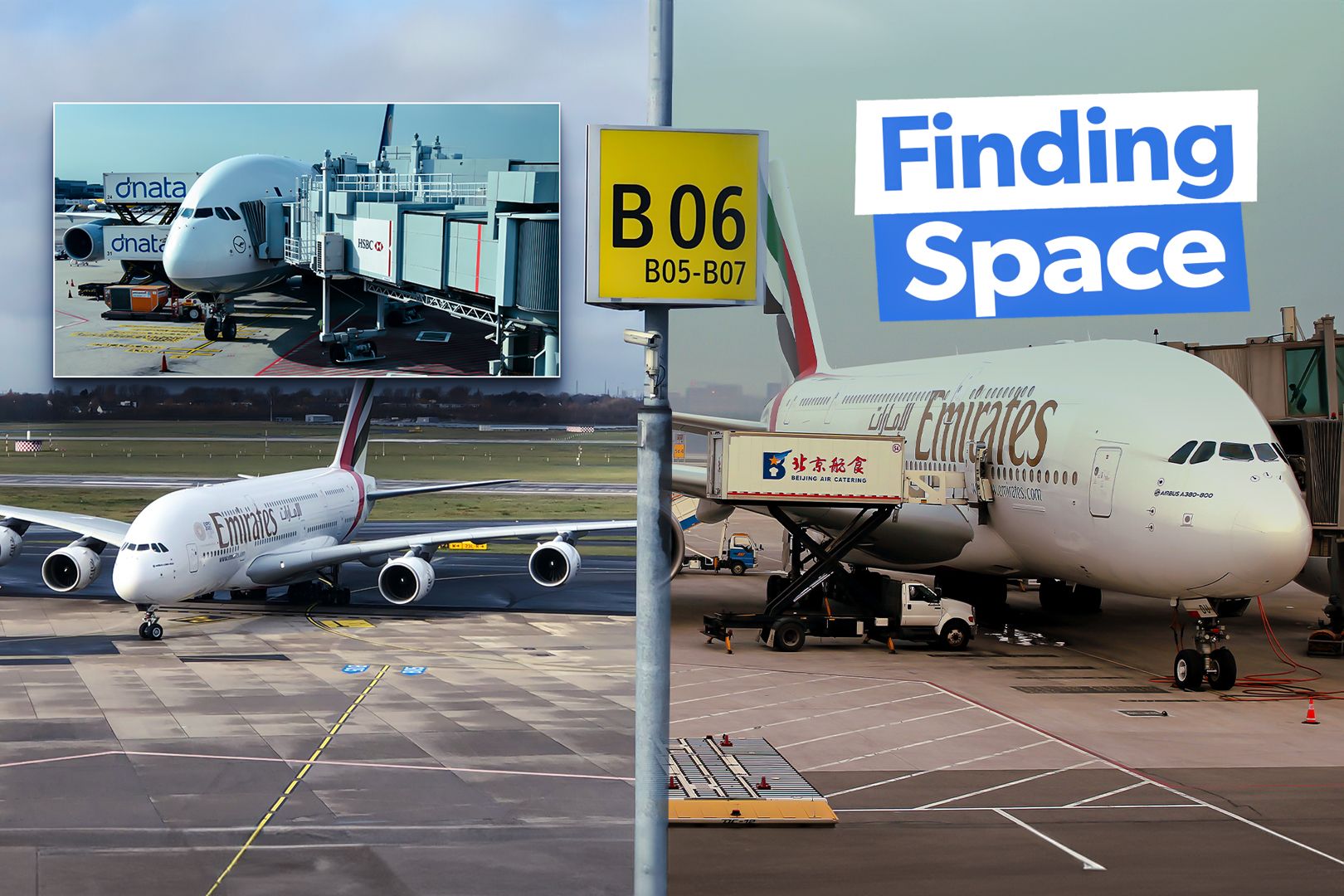
Related
Bigger & Better: How Have Airports Adapted To Accommodate The Airbus A380?
Some airports spent over $160 million on infrastructure changes to accommodate the massive Airbus A380.
It is environmentally friendly
The A380 is reputed for low noise emissions. In many cases, the A380’s larger wing area enables it to land significantly slower, which generates half the noise of earlier-generation large aircraft. With low fuel consumption per passenger, reduced noise levels, and lower CO2 and NOx emissions, the A380 has set the bar high in the aviation industry.
Photo: Tom Boon | Simple Flying
Some of the numbers related to lower emissions of the A380 are:
- 33% better fuel burn and CO2 emissions compared to previous generation aircraft.
- NOx 30% below CAEP/6
- 16.4 EPNdB noise margin
The lower emissions of the A380 help the collective zeitgeist of the aviation industry’s push towards sustainability. Even passengers are looking for rewards for being mindful of their carbon emissions, which is why many airlines are introducing miles and points for passengers looking to offset their carbon.
It is extremely efficient and reliable
| Engines | Rolls-Royce Trent 900 or Wingspan (geometric) 79.8 m Engine Alliance GP 7200 |
| Range (w/max. passengers) | 8,000nm 15,000 km |
| Fatality count | 0 |
The A380 consists of two high-bypass ratio engine options (the Engine Alliance GP7200 and Rolls-Royce’s Trent 900), advanced wings, and landing gear design. The aircraft also has an enhanced onboard central maintenance system and variable frequency generators, which simplify the electrical generation network offering. Such modern technologies of the A380 increase its reliability and maintainability.
Photo: Emirates
All such aerodynamic and technical details help the A380 achieve the distinction of having never been involved in an accident with a fatality. For an aircraft that is operated by more than 237 operators and has flown 800,000 flights over 7.3 million block hours, the absence of a major accident/ incident is a great plus. There have also been no hull losses on the A380, giving it the reputation of being one of the safest passenger aircraft ever built.
All in all
The Airbus A380 is a combination of passenger comfort, innovation, and efficiency, making it a significant part of the aviation industry. Not only did it usher in a new era for passenger comfort, but the A380 has also set the standard for environmental conservation with its low fuel consumption, which has been passed on to future aircraft generations as well. Considering the size of the aircraft, the purpose it serves in managing some other aspects of aviation. Also, while taking care of nature, it is truly amazing and exemplary for other aircraft of its size in business.
